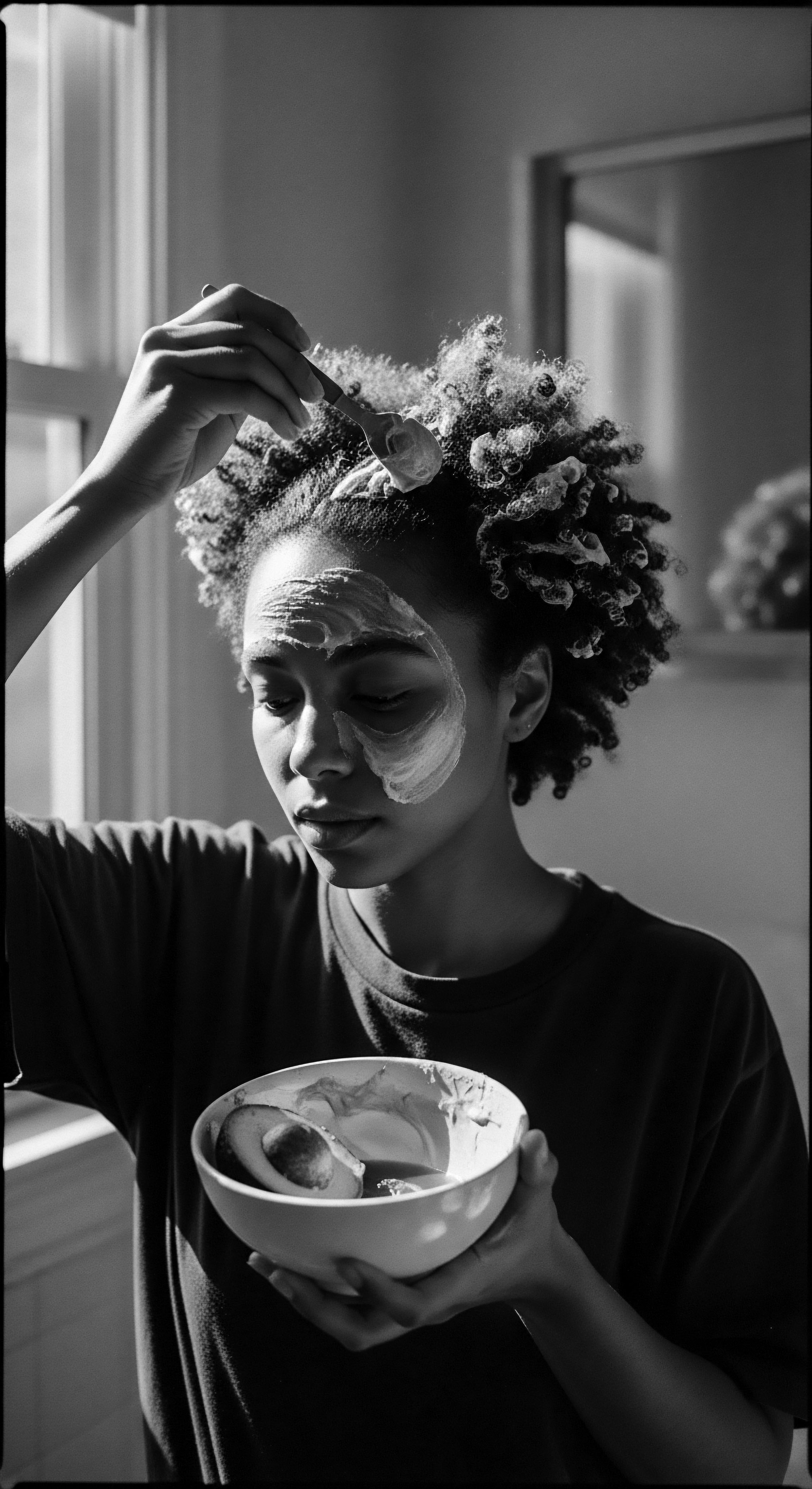
Fundamentals
The concept of Oil Absorption, at its simplest, refers to the capacity of a hair strand to take in and hold onto oils. This fundamental interaction between hair and oil is far from a mere technicality; it stands as a cornerstone of hair care, particularly for those with textured hair. When we speak of oil absorption, we are considering how readily a hair fiber allows lipid molecules to penetrate its outer layers and integrate within its structure. This process is deeply intertwined with the hair’s porosity, which describes the condition of its cuticle layer—the outermost protective scales.
For individuals with textured hair, this process carries immense significance. The unique coiled, kinky, or wavy patterns of these strands naturally impede the easy distribution of sebum, the scalp’s protective oil, from root to tip. This inherent characteristic often leads to dryness and a greater susceptibility to breakage, making external oil application a time-honored practice for moisture and protection. Understanding how oils are absorbed provides the initial insight into why certain oils are more effective for specific hair types and how traditional methods of application have been perfected over generations to maximize these benefits.
Oil Absorption is the hair’s capacity to draw in and retain lipids, a process profoundly shaping the care and resilience of textured hair across generations.
The Meaning of oil absorption for textured hair extends beyond simple hydration. It speaks to the hair’s ability to create a barrier against environmental stressors, to maintain its elasticity, and to exhibit a healthy sheen. Without adequate oil absorption, hair can feel rough, appear dull, and be more prone to tangling. The Explanation of this process begins with the hair’s structure ❉ the cuticle, cortex, and medulla.
Oils primarily interact with the cuticle, either sealing it to prevent moisture loss or penetrating it to condition the inner cortex. The effectiveness of this interaction is what defines optimal oil absorption.
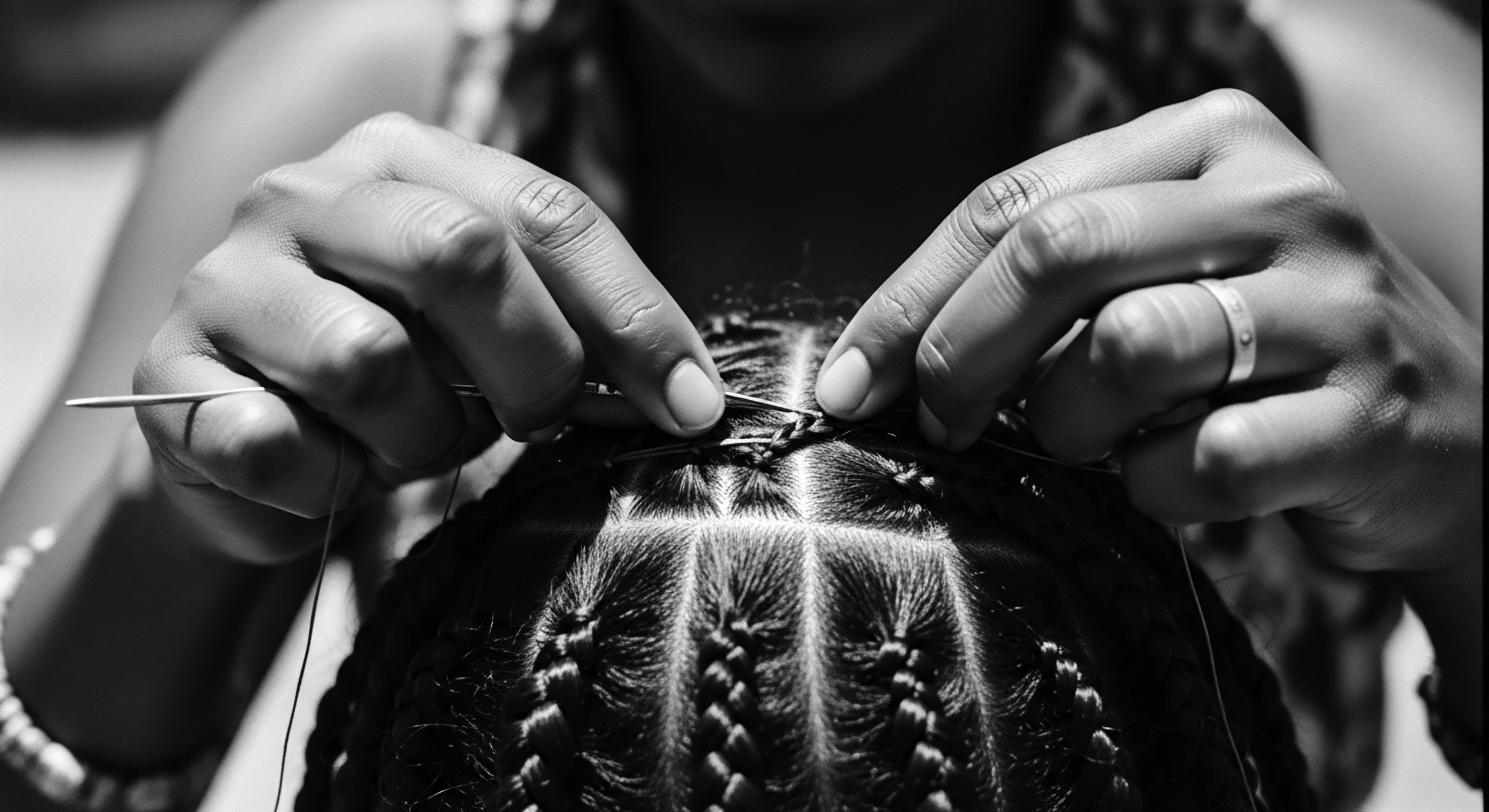
The Hair’s Embrace of Oils
Consider the hair strand as a thirsty plant, seeking nourishment. Just as a plant’s leaves absorb dew, hair fibers absorb oils. This natural inclination has been observed and utilized by ancestral communities for millennia.
The density of hair, which refers to the number of individual strands on the scalp, also plays a role in how oil is distributed and perceived. Denser hair, often a characteristic of textured hair, can appear fuller, yet the tight curl patterns can make it harder for natural oils to travel down the shaft, thus necessitating external aid.
The careful selection of oils in traditional hair care is a testament to an intuitive understanding of this absorption. Different oils possess varying molecular sizes and fatty acid profiles, influencing their ability to penetrate or sit on the hair shaft. For instance, some oils, like coconut oil, are known for their smaller molecular structure, allowing them to penetrate the hair shaft more readily, while others, like castor oil, tend to sit on the surface, offering a protective seal. This innate knowledge of oil properties, passed down through oral traditions and hands-on practices, forms the bedrock of textured hair heritage.
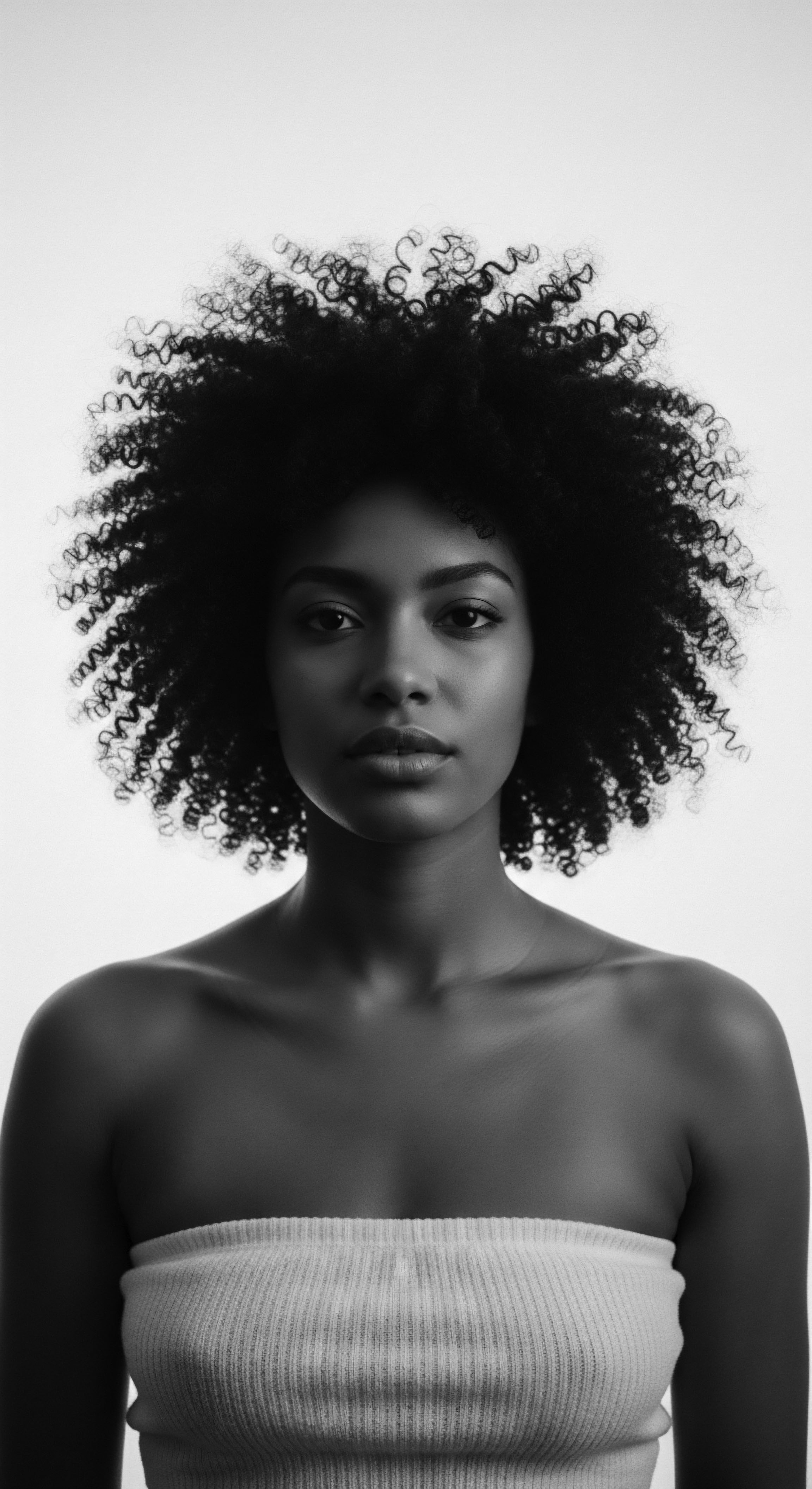
Intermediate
The intermediate understanding of Oil Absorption moves beyond its basic definition to explore the dynamic interplay between the oil, the hair’s inherent structure, and the external environment. It is an acknowledgment that this seemingly simple phenomenon is, in fact, a complex negotiation between molecular forces and the unique morphology of textured hair. This deeper dive reveals how ancestral practices, honed over centuries, often mirrored scientific principles long before they were formally articulated, especially when considering the particularities of Black and mixed-race hair.
The Description of oil absorption at this level involves appreciating the hair’s porosity as a primary determinant.
- Low Porosity Hair ❉ This hair type possesses tightly bound cuticles, making it initially resistant to moisture absorption. However, once moisture or oil penetrates, it is retained for a longer duration. Traditional practices often involved warming oils to help lift these cuticles, thereby facilitating better absorption.
- Medium Porosity Hair ❉ With a more relaxed cuticle layer, this hair type readily absorbs and retains moisture and oils at a balanced rate. It generally requires less intensive methods for oil application.
- High Porosity Hair ❉ Characterized by raised or damaged cuticles, this hair absorbs moisture quickly but struggles to hold onto it. This can be a result of genetic predisposition or external damage, such as chemical treatments or excessive heat. For high porosity hair, heavier oils or butters are often favored to seal the cuticle and prevent rapid moisture loss.
The historical use of specific oils across various African and diasporic communities provides a compelling case study of this intuitive understanding. For example, in many West African traditions, shea butter, with its rich, emollient properties, has been a staple for conditioning and protecting hair. Its substantial lipid content offers a sealing effect, which is particularly beneficial for hair that might otherwise experience rapid moisture evaporation in hot, dry climates. This practical application demonstrates an ancestral Interpretation of oil absorption, recognizing that thicker, denser emollients provided sustained protection.
The nuanced dance of oil absorption reveals itself in the hair’s porosity, a key to unlocking the wisdom embedded in ancestral care rituals.
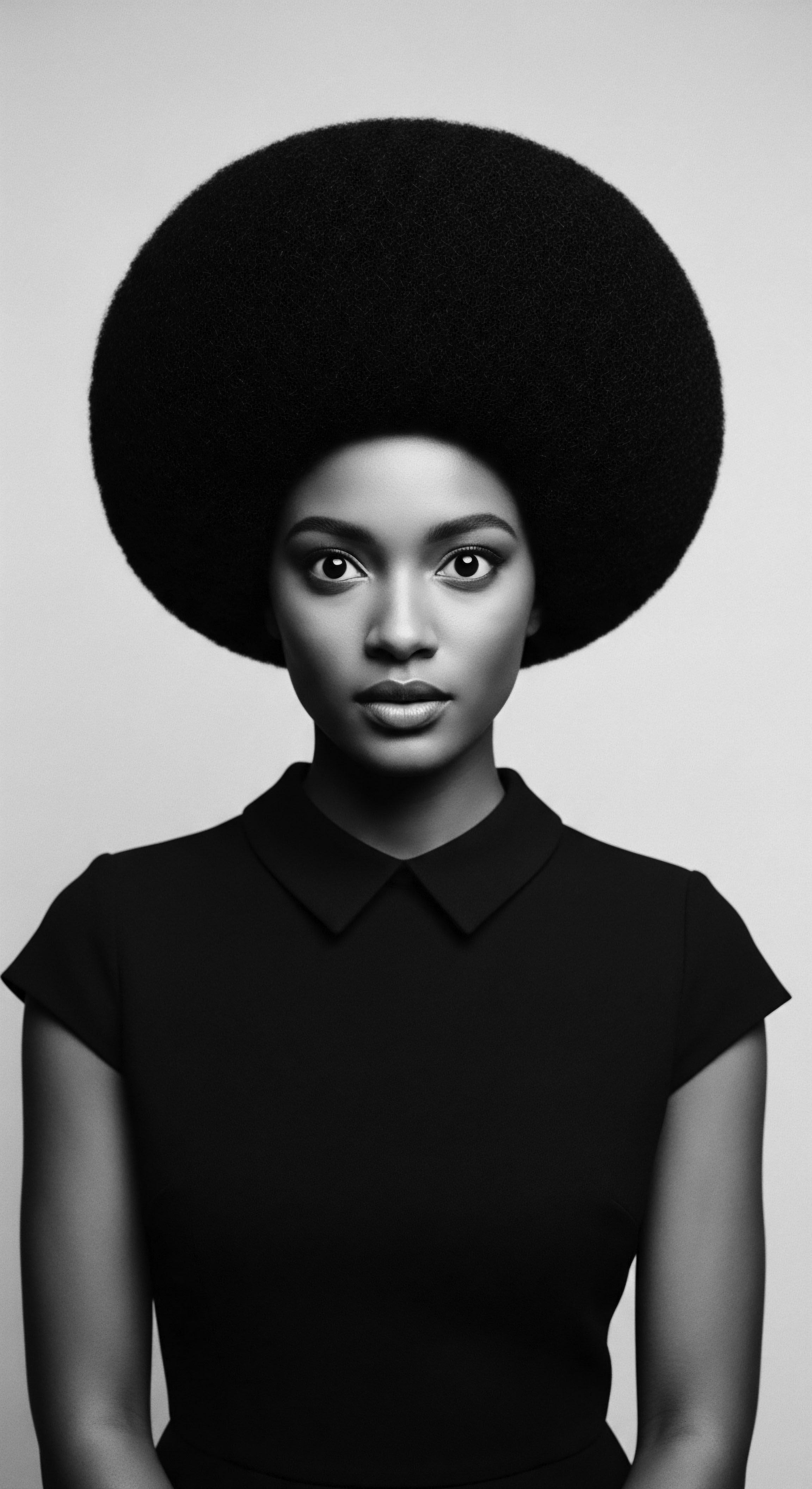
Ancestral Alchemy and Hair’s Chemistry
The application of oils in ancestral hair care was rarely a solitary act. It was often integrated into elaborate rituals, such as scalp massages, braiding, and protective styling. These practices, far from being mere aesthetics, played a direct role in enhancing oil absorption and overall hair health.
For instance, the act of massaging oils into the scalp, a practice common in both African and Ayurvedic traditions, increases blood circulation, which in turn can promote healthier hair growth and better nutrient delivery to the follicles. This holistic approach recognizes the interconnectedness of scalp health and hair vitality.
Consider the practice of “oil baths” or “hot oil treatments,” which have been used for thousands of years, originating in African communities. These treatments involve warming natural oils before applying them to the hair and scalp. The gentle heat helps to open the hair cuticle, allowing the oil to penetrate more deeply into the hair shaft. This ancestral wisdom aligns with modern scientific understanding of how heat can temporarily alter the hair’s structure to facilitate absorption.
| Traditional Oil Shea Butter |
| Region of Prominence West Africa |
| Hair Absorption Characteristic (Ancestral Understanding) Creates a protective seal, deeply moisturizes, prevents moisture loss. |
| Traditional Oil Coconut Oil |
| Region of Prominence South Asia, Africa |
| Hair Absorption Characteristic (Ancestral Understanding) Penetrates deeply due to small molecular size, strengthens from within. |
| Traditional Oil Castor Oil |
| Region of Prominence Ancient Egypt, Caribbean |
| Hair Absorption Characteristic (Ancestral Understanding) Thick, provides surface coating, promotes growth and shine. |
| Traditional Oil Olive Oil |
| Region of Prominence Mediterranean, North Africa |
| Hair Absorption Characteristic (Ancestral Understanding) Nourishes, adds softness and shine, good for deep conditioning. |
| Traditional Oil Mongongo Oil |
| Region of Prominence Southern Africa |
| Hair Absorption Characteristic (Ancestral Understanding) Known to absorb UV light, forms a protective film on hair. |
| Traditional Oil This table illustrates the diverse roles of oils, understood through generations of application for textured hair's specific needs. |
The Clarification of oil absorption also touches upon the distinction between surface coating and true penetration. While some oils primarily form a film on the hair’s exterior, reducing moisture evaporation and adding shine, others are capable of diffusing into the hair’s cortex. This deeper penetration offers more substantial benefits, such as strengthening the hair from within and reducing protein loss. The wisdom of ancestral hair care often intuitively differentiated between these effects, selecting oils for their intended purpose—be it daily maintenance, deep conditioning, or protective styling.
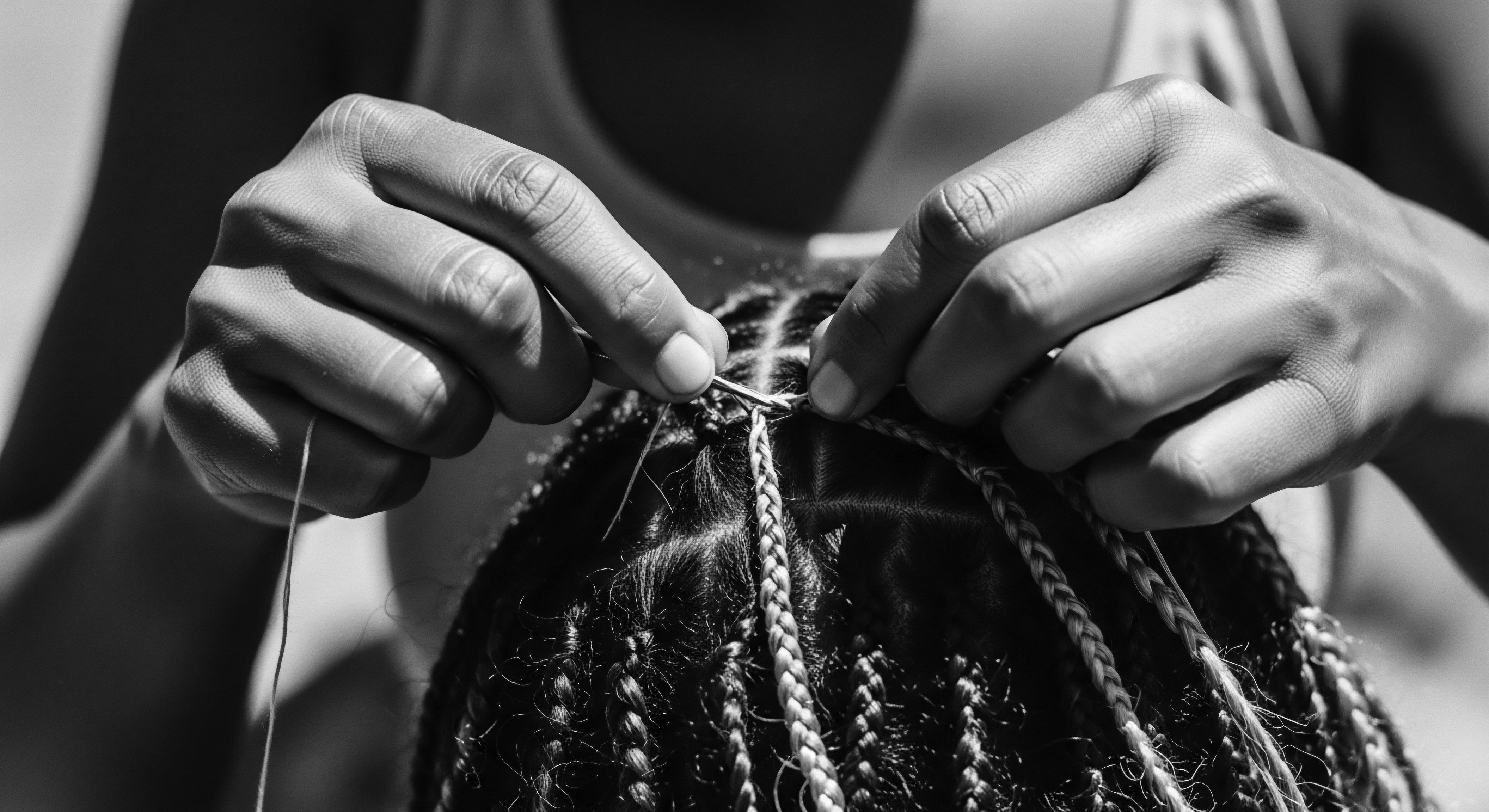
Academic
The academic Definition of Oil Absorption within the context of textured hair transcends a mere description of uptake; it is a rigorous examination of the physicochemical interactions governing lipid permeation into the complex, often anisotropic, structure of the hair fiber. This scholarly inquiry into Oil Absorption for textured hair, particularly within Black and mixed-race communities, demands an exploration of the hair’s unique morphological and chemical characteristics, which significantly modulate its affinity and capacity for exogenous lipids. The Meaning of this phenomenon, from an academic perspective, is rooted in the interplay of cuticle integrity, cortical heterogeneity, and the specific molecular properties of various oils, all of which have profound implications for hair health and the efficacy of traditional care practices.
The fundamental Explanation of oil absorption at this elevated level necessitates an understanding of the hair shaft’s intricate architecture. The cuticle, composed of overlapping keratinized cells, serves as the primary barrier. Its condition—whether smooth and intact (low porosity) or lifted and compromised (high porosity)—dictates the initial rate and extent of oil ingress. Beyond the cuticle lies the cortex, the primary load-bearing region of the hair, characterized by its fibrous protein matrix.
For textured hair, this cortical structure presents a unique challenge ❉ its bilateral distribution of paracortex and orthocortex regions creates distinct diffusion zones, leading to an uneven distribution of absorbed molecules. This inherent structural variability, unlike the more homogeneous diffusion observed in straight hair, means that oils may not uniformly penetrate the textured hair fiber, influencing mechanical properties and overall resilience.
Academic inquiry into oil absorption for textured hair uncovers a complex interplay of cuticle, cortex, and molecular dynamics, validating ancestral practices through scientific lens.
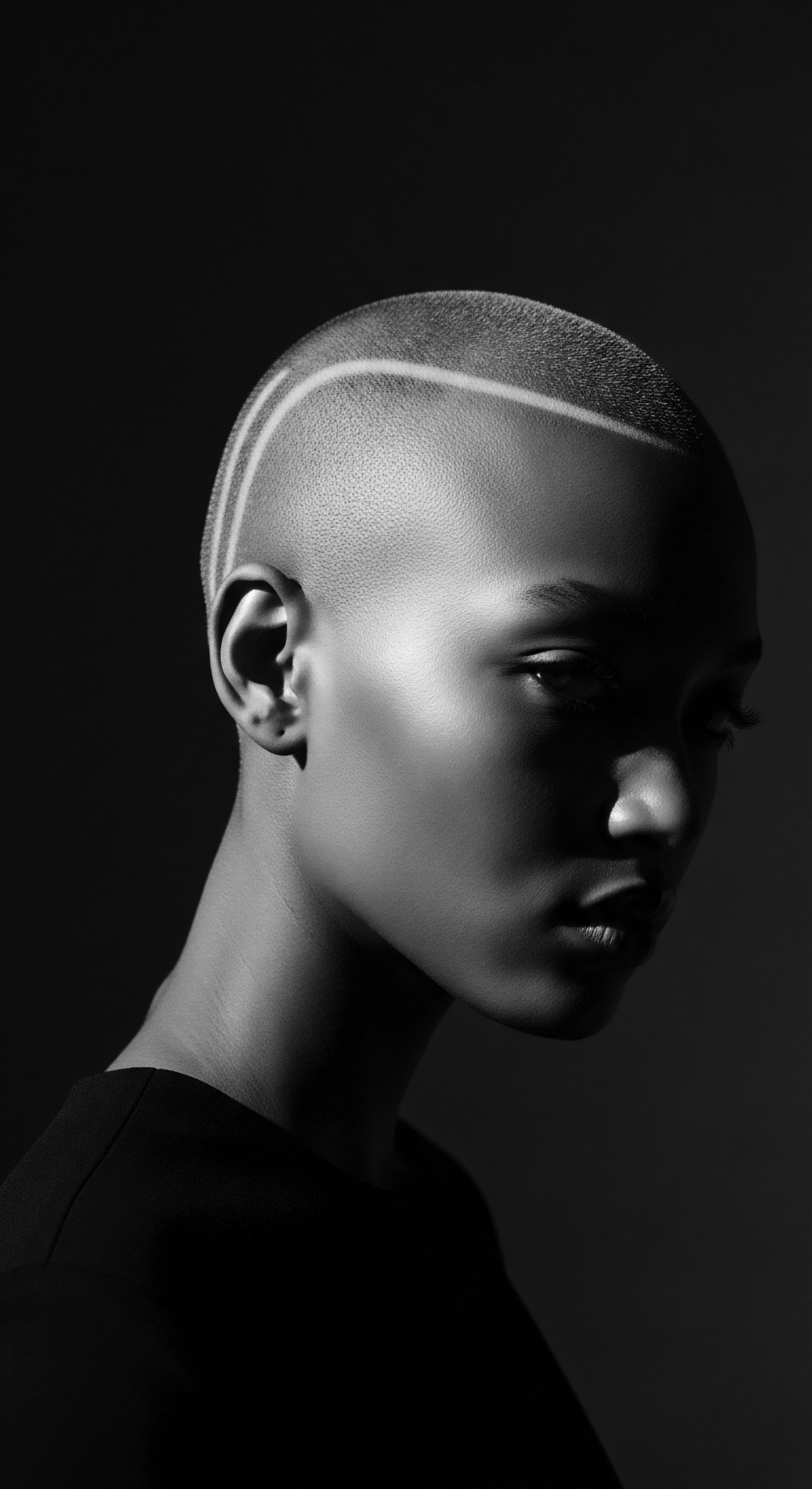
The Biophysics of Lipid Permeation in Textured Strands
From a biophysical standpoint, the absorption of oils into textured hair is governed by factors such as the oil’s molecular size, polarity, and fatty acid composition, alongside the hair’s surface energy and internal hydrophobicity. Smaller, less polar oils, like Coconut Oil, possess a greater propensity to penetrate the hair cortex due to their ability to diffuse through the intercellular lipid matrix of the cuticle. This deeper penetration is critical for reducing protein loss and providing internal strengthening, a benefit that aligns with its long-standing use in traditional South Asian and African hair care. In contrast, larger, more polar oils, such as Argan Oil, tend to reside more on the hair’s surface, offering lubrication and enhancing shine, yet showing less profound effects on mechanical properties in textured hair.
A pivotal aspect of the academic Delineation of oil absorption involves the impact of hair damage, particularly bleaching. Bleaching alters the hair’s chemical composition, increasing its hydrophilicity and diminishing its natural lipid and protein content. This structural compromise profoundly affects how oils interact with the hair fibers, leading to irregular oil distribution and reduced mechanical protection.
Research indicates that while oils may be present in the cortical regions of bleached textured hair, their ability to significantly modify key tensile parameters, such as Young’s modulus or break stress, remains limited. This underscores the challenges in restoring the integrity of severely damaged textured hair, even with robust oil treatments.
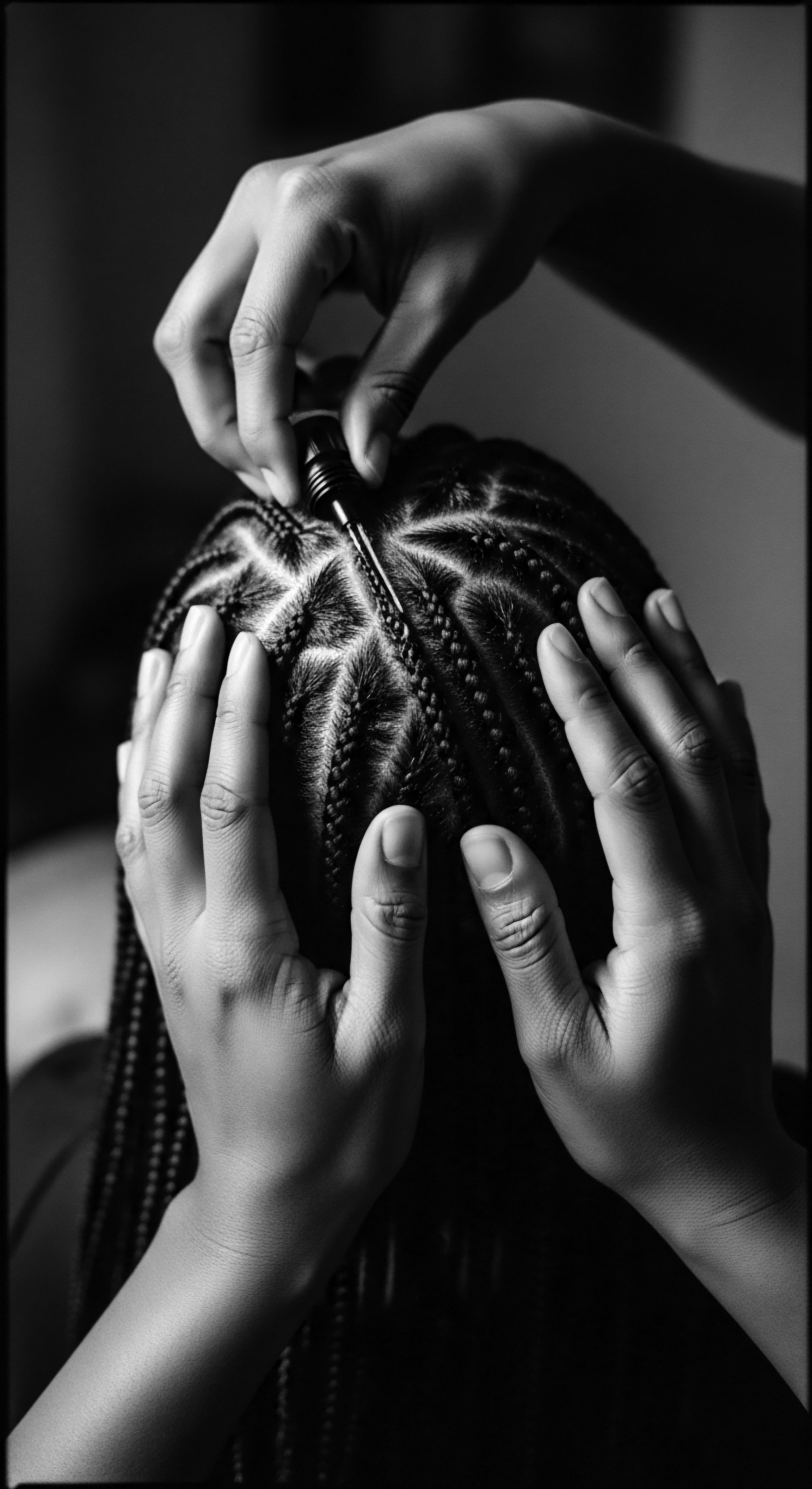
Ethnobotanical Wisdom and Modern Validation
The profound Significance of oil absorption within textured hair heritage is perhaps best illuminated by examining ethnobotanical studies. These investigations reveal a rich tapestry of ancestral knowledge regarding plant-based oils and their applications for hair care across various African communities. For instance, a study on plants used for hair and skin care in Afar, Northeastern Ethiopia, identified 17 plant species, with leaves being the most frequently utilized part for topical applications. This highlights a long-standing tradition of extracting beneficial compounds from nature to address specific hair needs.
The wisdom embedded in these practices often predates and, in many cases, is now being validated by modern scientific inquiry. The practice of using oils like Mongongo Oil in Southern Africa to protect hair from UV rays, forming a natural protective film, demonstrates an intuitive understanding of photoprotection centuries before the advent of modern sunscreens. Similarly, the widespread use of various plant oils for scalp massages in traditional African societies, aimed at maintaining healthy hair and addressing issues like lice, points to an ancient recognition of the importance of scalp microbiome health.
One particularly compelling example of ancestral insight meeting contemporary validation is the use of Chebe Powder by the Basara women of Chad. This mixture, often infused with oils and animal fats, is applied to the hair for length retention. While anecdotal evidence has long supported its efficacy, modern scientific understanding of how oils and butters can prevent water loss and reduce breakage in tightly coiled hair provides a framework for understanding this traditional practice.
The application of oils creates a lubricated, slippery feel, which can minimize friction and tangling, thus preserving length. This practice, rooted in generational wisdom, offers a tangible illustration of how ancestral knowledge of oil absorption and retention directly contributes to the resilience and growth of textured hair.
The academic Explication of oil absorption also considers the cultural dimensions of hair care. The ritual of hair oiling, passed down through generations in many Black and South Asian households, is not merely a cosmetic act but a deeply personal and communal experience. It is an act of love, connection, and the preservation of heritage. This socio-cultural context enriches the scientific understanding, reminding us that the physical properties of hair and oil are intertwined with identity and tradition.
The future of understanding oil absorption in textured hair lies in further interdisciplinary research that bridges ethnobotany, materials science, and cultural studies. By combining advanced analytical techniques, such as MALDI-TOF mass spectroscopy, with a profound respect for ancestral practices, we can continue to unlock the full potential of oils in nurturing textured hair. This collaborative approach promises to yield new insights into the mechanisms of oil-hair interaction, informing the development of hair care solutions that are not only scientifically sound but also culturally resonant and respectful of the rich heritage of Black and mixed-race hair.

Reflection on the Heritage of Oil Absorption
As we conclude our exploration of Oil Absorption, we find ourselves standing at the confluence of ancient wisdom and contemporary understanding, a place where the enduring spirit of textured hair heritage truly breathes. The journey through the nuanced Meaning of oil absorption has revealed it to be far more than a simple scientific principle; it is a profound echo from the source, a tender thread woven through generations of care, and an unbound helix voicing identity. From the sun-drenched landscapes of Africa, where indigenous plants yielded precious oils for protection and adornment, to the diasporic communities who carried these practices as vital fragments of their ancestral legacy, the relationship between textured hair and oils has always been sacred.
The wisdom of our foremothers, who intuitively understood which oils would best nourish and shield their crowns, was not merely anecdotal; it was a living science, passed down through the gentle touch of hands during communal grooming rituals. These were not just moments of physical care, but profound acts of connection, of storytelling, and of resilience. The resilience of textured hair, often facing societal pressures and environmental challenges, has been consistently supported by the judicious application of oils, a testament to the power of inherited knowledge.
In the whispers of ancient practices, we hear the timeless call to honor our strands, to treat them with the reverence they deserve. The careful selection of oils, the rhythmic massage, the protective styling—each element a deliberate act of love, informed by generations of observation and embodied experience. This enduring heritage reminds us that true hair wellness is not found in fleeting trends, but in the deep, resonant connection to our roots, to the earth, and to the hands that first taught us how to care.
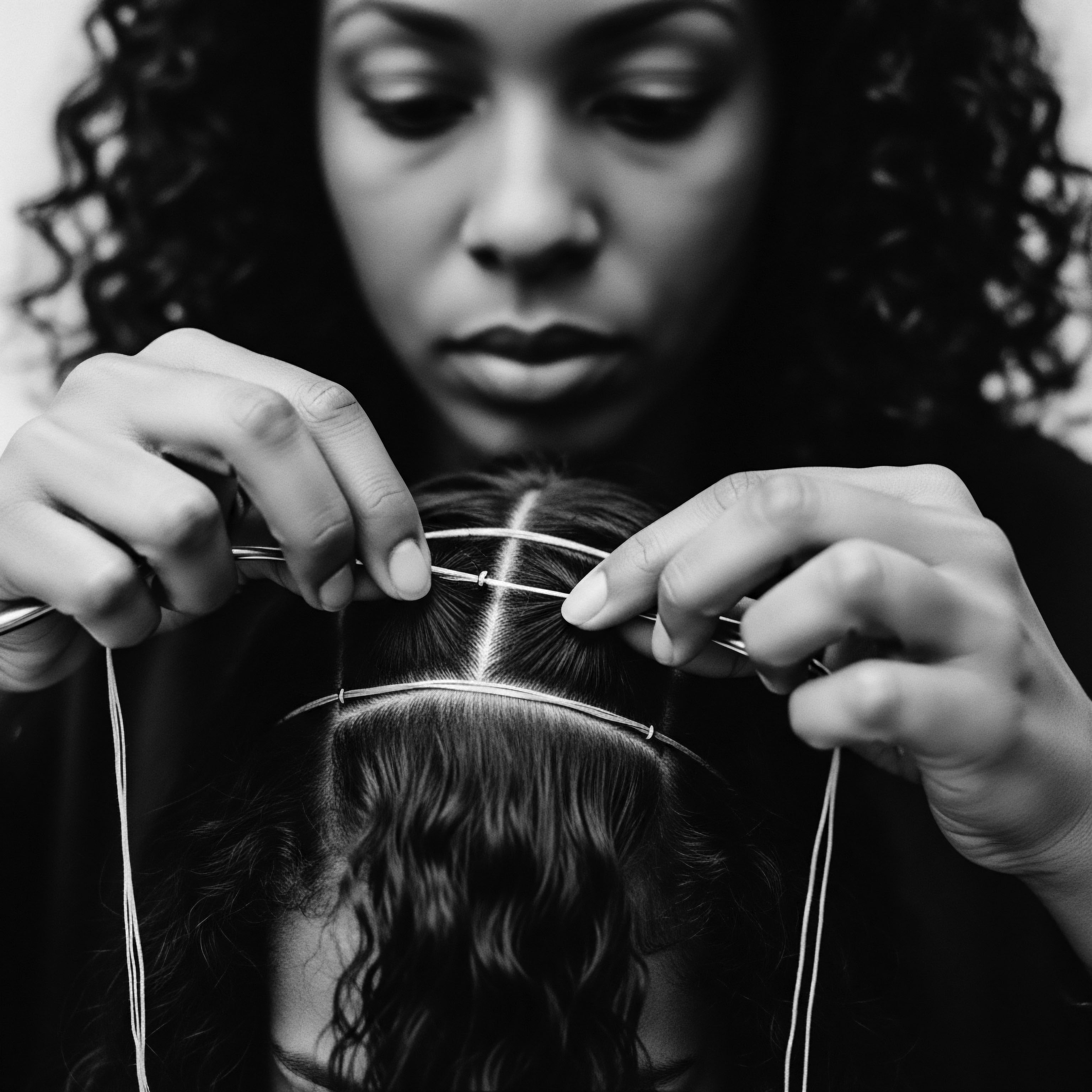
References
- Africa Imports. Traditional African Secrets For Long And Healthy Hair.
- Chatelaine. Hair Oiling Is More Than A Trend—It Connects Me To My South Asian Roots. (2023).
- Cosmetics Design. Study reveals differences in vegetable oil penetration between textured and straight hair types. (2025).
- Ethnobotany Research and Applications. Plants used for hair and skin health care by local communities of Afar, Northeastern Ethiopia. (2025).
- Juniper Publishers. Cosmetic Ethnobotany Used by Tribal Women in Epe Communities of Lagos State, Nigeria. (2024).
- Mango Butterfull Cosmetics. What is the purpose of the oil bath? (2022).
- MDPI. Cosmetopoeia of African Plants in Hair Treatment and Care ❉ Topical Nutrition and the Antidiabetic Connection?
- ResearchGate. Effect of oil films on moisture vapor absorption on human hair.
- ResearchGate. Physicochemical Properties of Textured Hair. (2022).
- Stabroek News. The west has ‘discovered’ hair oiling. (2023).
- The Untold Story of Jojoba Oil in Black Beauty | BeautyMatter. (2025).
- KVC West Virginia. Textured Hair. (2024).
- Wikipedia. African-American hair.
- Cécred. Understanding Hair Oiling ❉ History, Benefits & More. (2025).
- Brown History. Reclaiming the Ancestral Practice of Hair Oiling as South Asians. (2023).
